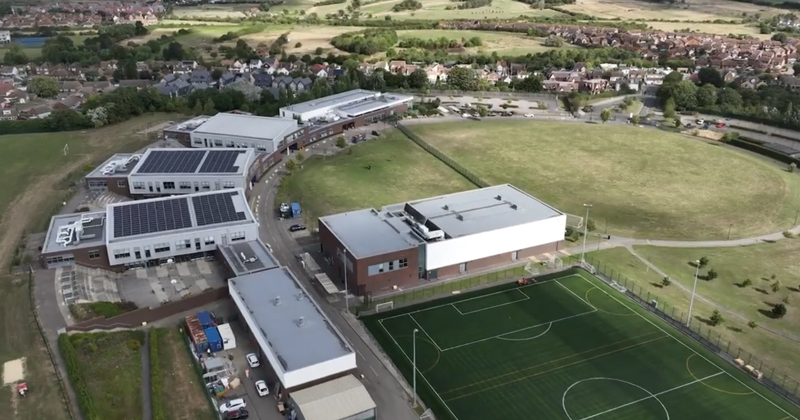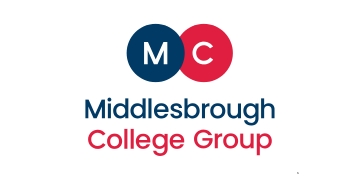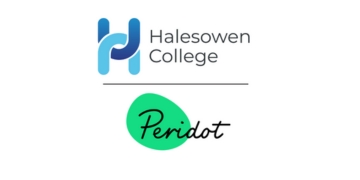Nearly 1,300 secondary pupils used to set off each morning on the “daily” exodus out of the Isle of Sheppey, turning their backs on the local school that even teachers had deemed too dangerous.
But after one of the country’s biggest school restructures in recent years, pupils are now battling for an education spot on the island.
However, amid the success, there are rumblings of discontent over admissions and inclusion. Schools Week investigates…
One-of-a-kind rebrokerage
When Oasis Academy Isle of Sheppey closed last year, it had never been rated ‘good’ or better by Ofsted.
In 2022, inspectors found more than half of pupils were not attending regularly. Behaviour was “often dangerous”, leading staff to strike. “Too little” was done to tackle racist, sexist and homophobic language.
Nearly 1,300 secondary pupils were travelling off the island – nine miles long and five miles wide – in a “daily exodus” to schools on Kent’s mainland.
The school – spread across two sites over two miles apart – became the first to be given up by Oasis Community Learning, one of England’s largest trusts.
The rebroker was unique and most likely the largest undertaken by government.
The school was split into two last year, one to be run by the Leigh Academies Trust and another overseen by the EKC Schools Trust.
So how was it all done, and how is it going? Schools Week spoke to leaders, councillors and local experts to find out…
Sending a ‘clear message’
Leigh chief executive Simon Beamish said it had “changed absolutely everything” about how the school operates, now called Leigh Academy Minster (LAM). It is based on the old school’s southern campus in Minister on Sea.
The focus was initially on behaviour, attendance and safeguarding.
“Everybody got a very clear message they were expected to behave, lessons weren’t going to be disrupted, and pupils were going to treat each other and adults with respect,” said Beamish.
Suspensions were high initially but “rapidly” declined later, Beamish said, with pupils feeling “much happier and safer to come into school”.
EKC Schools Trust, which runs EKC Sheppey Secondary on the old school’s north site, said it has been “relentless in building a positive culture”.
It has focused on being “highly inclusive”, introducing “affordable uniform, free breakfast … and a behaviour policy that supports, rather than penalises, children with additional needs”.
When the new schools launched, parents of year 7, 8 and 9 pupils were asked which school they’d prefer to attend. But only LAM took on pupils in year 10 and 11.
Curriculum revamps
Both schools redesigned their curriculums. EKCSS offers a “strong academic core [that] also embeds technical and vocational pathways”.
Every element is “career-focused” and draws on experience from the trust’s sister organisation, East Kent Colleges Group.
LAM introduced a “baccalaureate middle-years programme into years 7, 8, 9”, Beamish added. History and geography are more “bespoke” to where pupils live “so they recognise themselves” in what they learn.

Much of the curriculum was “pared back down, made simpler and more logical in order to be delivered to a high quality”.
The prior school had “a lot of additional pathways and students doing a range of surprising qualifications” such as “hair and beauty”.
Beamish said: “We certainly wouldn’t recommend a course like that at key stage 4 – for me, that’s a course pupils progress on to in the sixth form when learning becomes more specialist.”
How is it all going?
Per-pupil attainment 8 scores – which measure GCSE performance across eight subjects – have improved at LAM.
It registered a score of 28.4 last year, up from 23.6 at its predecessor in 2023–24. Equivalent figures for EKCSS have not been published as it has no year 11 pupils yet.
Absence rates are down. LAM and EKCSS overall absence rates stood at 13.5 and 12.5 per cent respectively, compared to 15.6 in Oasis Isle of Sheppey’s final year of operation.
Former Kent headteacher and education adviser Peter Read said he would receive “weekly weeping letters saying: ‘My child’s at Oasis, what the hell can I do?’” But that correspondence has stopped.
Starkly, both schools are oversubscribed. A Kent council spokesperson said the “significantly strengthened education offer” means “the previous daily exodus of over 1,000 pupils travelling off-Island … reversed”.
In fact, 56 pupils had to be allocated places at other schools up to 27 miles away because both the island’s new schools are now oversubscribed.
Local councillor Mike Whiting, a former Kent cabinet member for education, even said some parents have opted to home educate instead, calling the families “inadvertent victims of the success of the two new academies”. This was despite LAM adding a bulge class.
The council has warned that one of the secondaries will have to expand to meet demand now.
‘Less inclusive trusts’
Despite the success, it has not been without issues.
Kent council papers said the problems caused by the academies’ oversubscription highlighted “the lack of direct influence a local authority can wield when provision of school places … is unsuitable”.
Documents seen by Schools Week show Kent council told the Office for the Schools Adjudicator (OSA) last year that the closure of Oasis Academy Isle of Sheppey was its “standout” admissions challenge in 2023–24.
Different trusts running the schools created “a complex environment to agree and manage such a complicated project”.
The process “highlighted how insufficient guidance in the school admissions code and underlying legislation is in providing [local authorities] and trusts a robust framework in which to make decisions”.
The council, in its letter, said the “lack of clarity also has the potential to allow less inclusive trusts to mandate preferential requirements that take advantage of the disparate nature of related SEN and alternative provision legislation”.
‘Misleading, undermining, baseless’
When asked for comment, a Kent council spokesperson said it was “not accusing any specific trust of being ‘less inclusive’”.
But they said a “key challenge” was “the inconsistent engagement with fair access protocol principles”, a statutory process “designed to ensure that vulnerable or hard-to-place children … are admitted quickly and equitably across schools”.
Councils are put in “a difficult position” when trusts fail to “fully participate in this process”.
“We are legally responsible for ensuring every child receives an education but lack the authority to compel schools to accept placements outside of formal admissions rounds,” the spokesperson continued.

When asked about Kent’s comments, Leigh said it “firmly reject[s] the idea” its school is “less inclusive”, describing them as “deeply misleading, undermining and baseless”.
Its admissions arrangements “are fully compliant” with national rules and “were agreed by KCC and the [Department for Education] prior to opening and after a full public consultation”.
An EKC spokesperson said its mission “is to serve the communities in which we work, focusing on the most deprived areas in east and south Kent”. But the “system in which we operate often works against those serving the most vulnerable children”.
“Ofsted outcomes and national performance measures can unintentionally incentivise schools and trusts to deter disadvantaged pupils, since attendance, behaviour and attainment figures are affected most by these groups.
“This has created a situation where some schools judged highly effective are, in reality, failing the very communities they exist to serve.”
Different cohorts
Government data shows just over 53 per cent of EKCSS’s pupils were considered eligible for free school meals last year, similar to the 51 per cent in Oasis Academy’s final year of operation. However, LAM has fewer, at 40 per cent.
Leigh stated the two new schools “serve different communities”, with LAM drawing “mainly from Minster and Eastchurch, which have lower deprivation levels overall”.
The trust said any change is down to the school’s catchment area becoming smaller as its popularity has increased, rather than “any difference in inclusivity”.
EKCSS also had the 11th highest proportion of pupils with an education, health and care plan (EHCP) in the whole county (6.7 per cent).
LAM’s rate was less than half that of EKCSS (3 per cent) and below the 4 per cent registered by Oasis in 2023–24.
Leigh argued the comparison with EKCSS is “not like-for-like”. This is because LAM “opened with pupils in every year group”.
Home education
KCC figures, obtained through the Freedom of Information Act, showed that 5.8 per 100 LAM pupils were de-registered from the school to be educated at home. Among primaries and secondaries, the figure was the 17th highest in the whole of Kent. EKCSS was 112th (1.9 per 100 pupils).
However, Leigh said 56 per cent of the requests “were from the families of students in years 10 [to] 13 who were given no choice on their child’s new school as part of the re-brokerage”.
“In its first year, LAM ensured all pupils were on full-time timetables vs more than 100 on part-time timetables under Oasis [and] around 150 pupils were returned from [AP],” the trust added.
“Many of these pupils had been receiving very little education, often of scandalous quality, prior to LAM opening. They had been effectively excluded from full-time education in the predecessor school by the back door.”
Leigh pupils on AP’s role
Leigh said some year 11 pupils last year were also single rolled at a new AP satellite school on the island, called Estuary Academy Island – which is rare. This meant the pupils’ results would not count in LAM’s results that year.
Beamish said these pupils were in Oasis’s internal AP, called Inspire, but “many had never attended Oasis and were never likely to attend LAM given their circumstances.
“Most had already been in some form of external AP for several years. This position was agreed after formal assessments by the AP provider and KCC [educational psychologists] in consultation with pupils and parents.”
He said the trust “had no role in this”, but leaked emails show Beamish had asked the council for this arrangement.

EKC said its AP pupils on the island have been dual-rolled, where results sit with the “main” school.
However, Emma Bradshaw, CEO of Alternative Learning Trust (ALT), which runs the island’s AP site, praised Leigh for taking on key stage 4 pupils, many of whom were “tricky”.
“They had never set foot in LAM. I fought to single roll them because I wanted them to know they were our children, so we could get them qualifications,” she said.
“Some were getting a few hours’ tuition each week [under Oasis]. They’d been abandoned by the system not working for them. There was lots of debate about it, but it isn’t off rolling because they were never on-roll.”
The AP had catered for 115 pupils at first, but this has now reduced to 65 as pupils reintegrated back into mainstream. ALT said this “demonstrates the effective impact of its tailored support systems”.
OSA roped in again
There have also been frictions between the two mainstream schools. Earlier this year, Leigh objected to EKC’s plans to name its primary on the Isle of Sheppey, Queenborough, as a feeder school to offer continuity of education.
Among other things, Leigh said the plan was “unfair” as it “potentially unfairly disadvantages children from a particular social or racial group” as there are other primaries with fewer pupils on free meals that are closer.
However, schools adjudicator Philip Lloyd said it “would not be unreasonable or unfair” to name Queenborough, which is three miles from the secondary, as a feeder school. There was “no evidence” it would “unfairly disadvantage children from a particular social or racial group”.
He pointed out EKC already admits a higher proportion of poorer pupils and those with additional needs than its predecessor.
Last year, 37 per cent of pupils at EKCSS had an EHCP or were in receipt of SEN support – above the predecessor Oasis school’s 29 per cent. LAM had 13 per cent.
£2m spent but true costs unclear
Questions remain about how much government funding was spent on turning around the schools.
Cabinet Office spending data shows about £2 million was allocated to the trusts involved in the launch of the new schools last year. Most of this (£1.5 million) went to Leigh, which spent its allocations on “transition planning”, leadership capacity and “new ICT infrastructure”.
Just under £140,000 went to EKCSS. A further £370,000 was given to the ALT.
However, it is unclear whether any more money was pumped into the project by the government. DfE has snubbed our requests for a breakdown of the costs associated with the handover, claiming it is not a rebroker and therefore it does not have to publish them.
The department was approached for comment.















Your thoughts